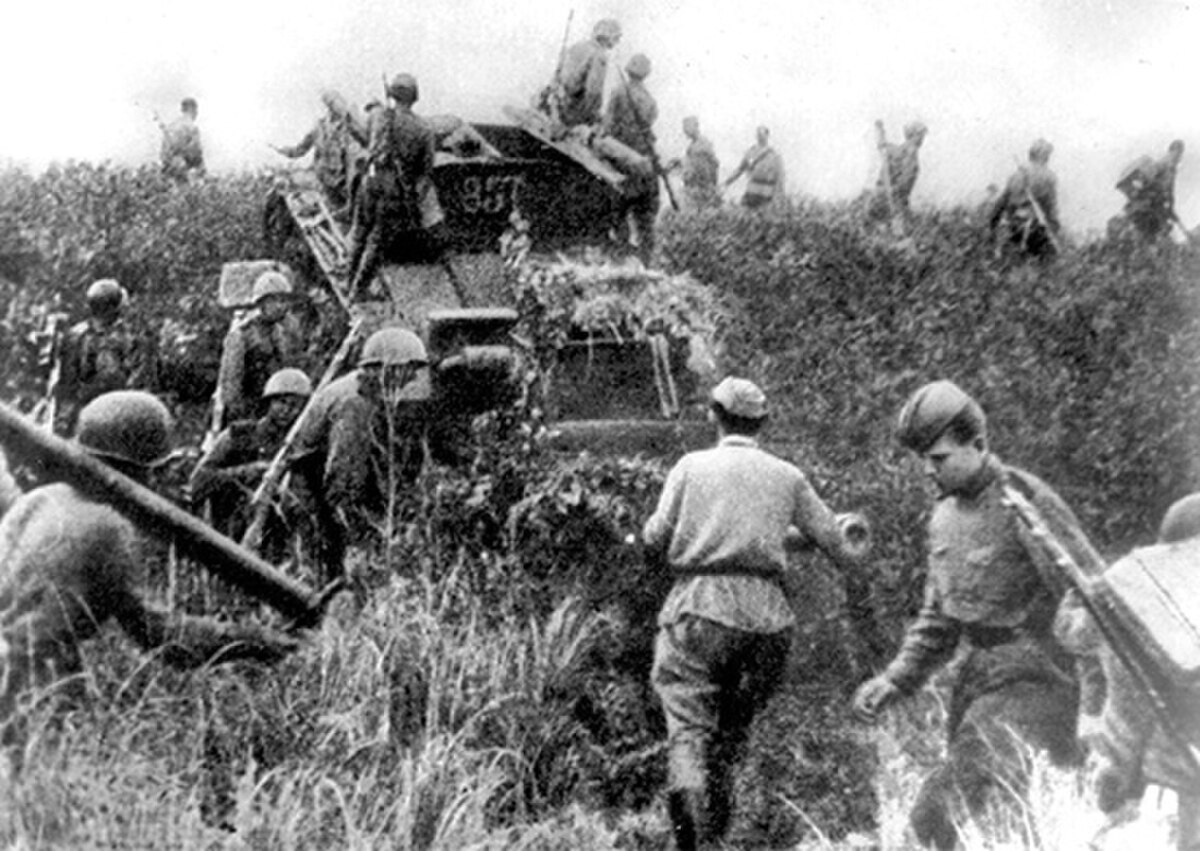
Soviet invasion of Manchuria
Mengjiang, Jingyu County, BaisThe Soviet invasion of Manchuria began on 9 August 1945 with the Soviet invasion of the Japanese puppet state of Manchukuo. It was the largest campaign of the 1945 Soviet–Japanese War, which resumed hostilities between the Union of Soviet Socialist Republics and the Empire of Japan after almost six years of peace. Soviet gains on the continent were Manchukuo, Mengjiang (the northeast section of present-day Inner Mongolia) and northern Korea. The Soviet entry into the war and the defeat of the Kwantung Army was a significant factor in the Japanese government's decision to surrender unconditionally, as it became apparent that the Soviet Union had no intention of acting as a third party in negotiating an end to hostilities on conditional terms.
This operation destroyed the Kwantung Army in just three weeks and left the USSR occupying all of Manchuria by the end of the war in a total power vacuum of local Chinese forces. Consequently, the 700,000 Japanese troops stationed in the region surrendered. Later in the year Chiang Kai-shek realized that he lacked the resources to prevent a CCP takeover of Manchuria following the scheduled Soviet departure. He therefore made a deal with the Soviets to delay their withdrawal until he had moved enough of his best-trained men and modern material into the region. However, the Soviets refused permission for the Nationalist troops to traverse its territory and spent the extra time systematically dismantling the extensive Manchurian industrial base (worth up to $2 billion) and shipping it back to their war-ravaged country.
Ask Herodotus
HistoryMaps Shop

Heroes of the American Revolution Painting
Explore the rich history of the American Revolution through this captivating painting of the Continental Army. Perfect for history enthusiasts and art collectors, this piece brings to life the bravery and struggles of early American soldiers.








